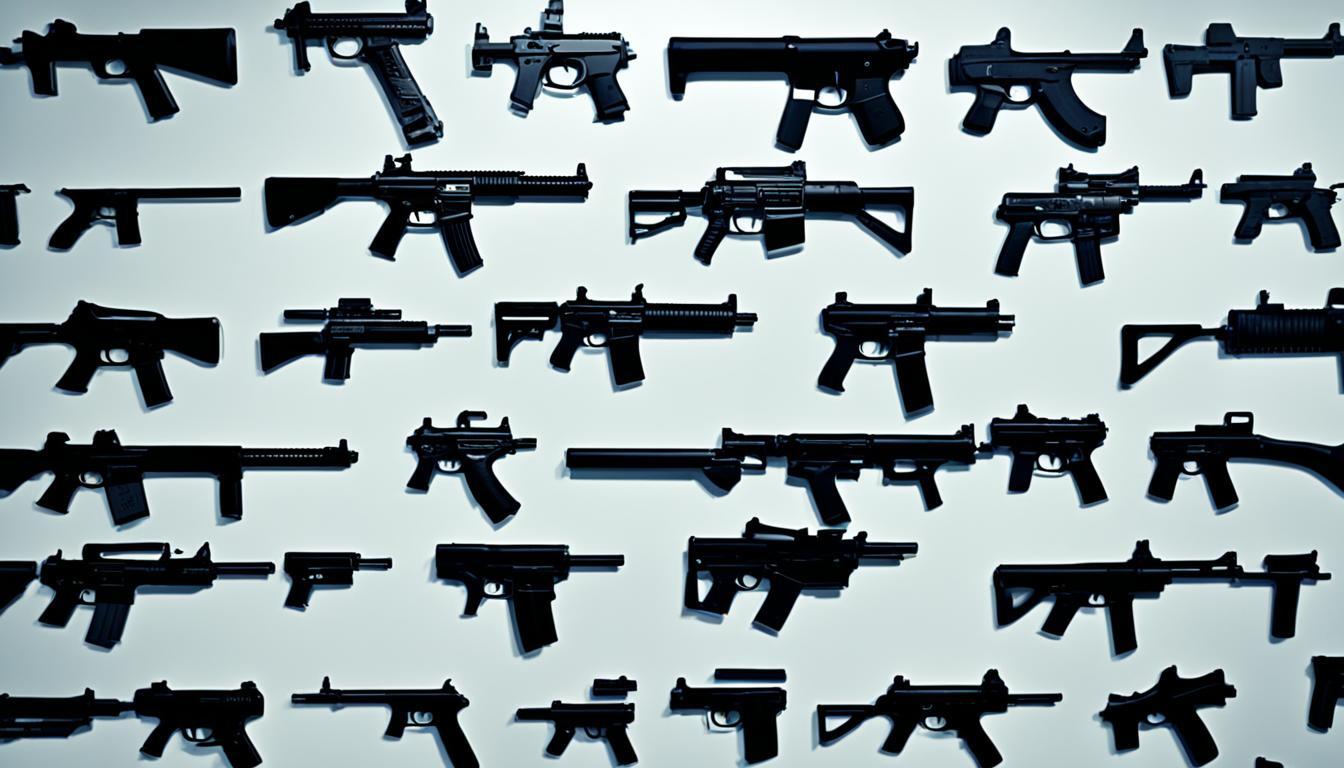Crossbows in Canada: Are They Legal? | Quick Guide
As a Canadian crossbow enthusiast, you may be wondering about the legalities surrounding crossbow ownership and use in Canada. Crossbows offer a unique hunting experience and have gained popularity among hunters across the country. To help you navigate the regulations and permits, here’s a quick guide to crossbows in Canada.
Key Takeaways
- Canadian hunters can use crossbows during firearms seasons for big game and small game, subject to the same hunting laws as bow and firearm hunters.
- Discharging a crossbow near certain locations such as schools, dwellings, or commercial wood cutting operations is illegal.
- Crossbows used for hunting moose, caribou, and black bear must meet specific specifications in terms of draw weight and arrow tips.
- Transporting a loaded crossbow in a vehicle, ATV, snowmobile, or aircraft is illegal.
- No registration or license is required to possess a crossbow in Canada under the Firearms Act.
Crossbow Basics and Functionality
When it comes to crossbows, understanding their basics and functionality is crucial for any enthusiast. Crossbows operate on the same principle as a traditional bow, where energy is transferred from the limbs to the arrow upon release of the string. However, there are some key differences that make crossbows unique.
The limbs of a crossbow are shorter and heavier compared to those of a bow, and they are mounted horizontally onto a stock. This design allows for a more compact and powerful weapon. The stock provides stability and support, allowing for easier aiming and accuracy.

Crossbow arrows, also known as bolts, differ from traditional bow arrows. Bolts are shorter in length and typically have a flat capped or half-moon nock. These specialized arrows are designed to work efficiently with the crossbow’s unique mechanics.
There are two main types of crossbows: recurve and compound. Recurve crossbows have limbs that curve away from the shooter, while compound crossbows utilize a system of pulleys and cables to generate more power and precision. Additional features, such as scopes or sights, can be found on certain crossbow models to enhance accuracy.
It’s important to note that crossbows have a limited range compared to firearms. Estimating distance accurately is crucial for achieving precise shots. With practice and experience, crossbow enthusiasts can become skilled in judging distances effectively.
To summarize, crossbows operate on the same principle as bows but have distinct features that optimize their functionality. The limbs and stock design, along with specialized bolts, contribute to their shooting power and stability. Understanding these basics is essential for any crossbow enthusiast.
Crossbow Regulations and Ownership
When it comes to owning and using crossbows in Canada, there are specific regulations that must be followed to ensure compliance with federal laws and to promote safety. Understanding these regulations is essential for every crossbow owner and enthusiast.
Prohibited Crossbows:
- Crossbows that can be aimed and fired with one hand
- Crossbows with an overall length of 50 cm or less
It is important to note that owning a crossbow does not require a firearms license or registration certificate under the Firearms Act. However, there are rules and restrictions regarding the transport and use of crossbows.
Transporting Crossbows:
Transporting a crossbow during closed hunting seasons or outside an individual’s designated hunting area requires it to be cased or wrapped and tied. This ensures the safety of others and prevents any accidental discharges. Additionally, it is illegal to transport a loaded crossbow in a vehicle, ATV, snowmobile, or aircraft.
If you have any questions regarding the possession and acquisition of firearms, you can reach out to your local RCMP office or the Chief Firearms Office for more information.

Note: The image represents the regulations surrounding crossbows in Canada and the importance of understanding and following them.
Crossbow Hunting and Target Practice
When it comes to crossbow hunting, accuracy is key. Sighting-in your crossbow is an essential step to ensure precise shot placement. By adjusting the sights or scope, you can align your crossbow with specific distances, increasing your chances of a successful hunt.
For optimal accuracy, it is recommended to engage in regular practice sessions. Start at shorter distances and gradually increase the range to develop your skills. This will not only improve your accuracy but also familiarize you with the effective range of your crossbow.
While practicing, always prioritize safety. Inspect your crossbow for any signs of damage or wear before each shooting session. Utilize a shooting rest or bench to stabilize your aim and increase accuracy. Remember to always be aware of your target and what lies beyond it to prevent any accidents.
Additionally, adhering to hunting ethics is crucial for maintaining a positive image of hunting. Treat the wildlife and the environment with respect, follow hunting regulations, and ensure responsible hunting practices to preserve the integrity of the sport.
| Target Practice Tips: |
|---|
| 1. Regularly sight-in your crossbow to ensure accuracy. |
| 2. Begin practice sessions at shorter distances and gradually increase the range. |
| 3. Inspect your crossbow for damage or wear before each shooting session. |
| 4. Use a shooting rest or bench for stability and greater accuracy. |
| 5. Always be aware of your target and what’s beyond it for safety. |
Crossbow Laws in Different Canadian Provinces
The legality of crossbows varies across Canadian provinces. In British Columbia and Alberta, crossbows are legal for all hunting seasons except bow-only seasons. This means that crossbow enthusiasts in these provinces can enjoy using their crossbows throughout the year, taking advantage of the different hunting seasons available. However, it is important to note that certain hunting regulations and licenses still apply, ensuring the safety and sustainability of the sport.
Saskatchewan, on the other hand, has specific regulations regarding crossbow use. Crossbows are only legal during muzzleloader and rifle seasons, except in specific wildlife management zones. This means that hunters in Saskatchewan can use their crossbows during these designated seasons, allowing them to pursue their hunting passion legally and responsibly.
In Manitoba, crossbow use is permitted during muzzleloader and rifle seasons, but there are restrictions on draw weight and arrow tips. These limitations aim to ensure ethical hunting practices and maintain the integrity of the sport. Similarly, in Ontario, crossbow use is allowed except during gun-only seasons. There are also specific requirements for draw weight and draw length, ensuring that hunters comply with the regulations set forth by the province.
Quebec permits crossbows during firearm, shotgun, and muzzleloader seasons, but restricts their use during bow-only seasons. This means that crossbow enthusiasts can enjoy hunting with their crossbows during the designated seasons and comply with the hunting regulations in Quebec. It is important to always stay informed about the specific rules that apply to your province to ensure that you are hunting legally and responsibly.
Other provinces, such as New Brunswick, Nova Scotia, Prince Edward Island, Northwest Territories, and Nunavut, also have their own regulations regarding crossbow use. It is crucial for crossbow enthusiasts in these provinces to familiarize themselves with the specific laws and regulations to enjoy their sport within the legal boundaries. However, it is important to note that crossbows are prohibited in Newfoundland and Yukon Territory. Therefore, individuals in these provinces should explore alternative hunting methods.
- Canada Arrest Protocol: What Police Say Upon Arrest - June 12, 2025
- Can Police Disclose Who Reported You? Find Out Here - June 6, 2025
- 2025 Window Rebates Ontario: How to Save Money While Replacing Windows and Doors - April 24, 2025




















Post Comment